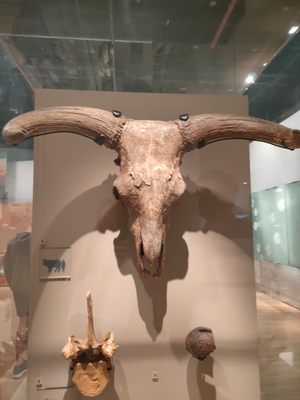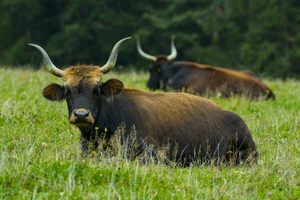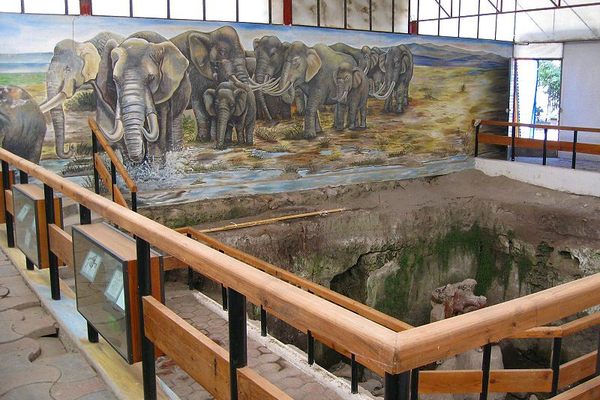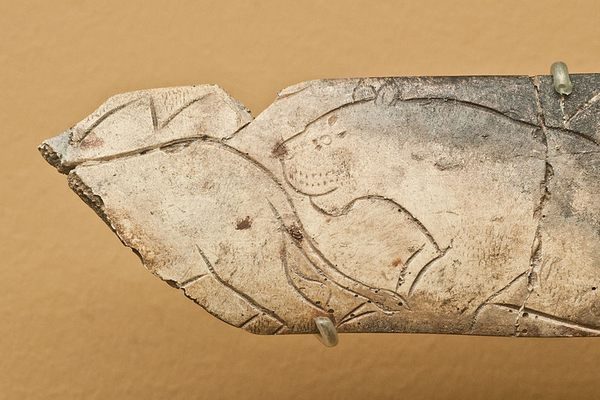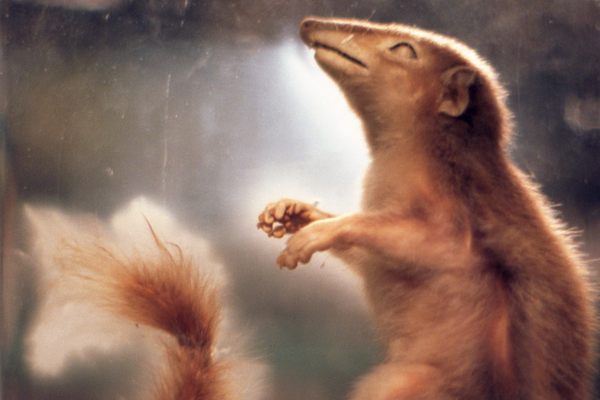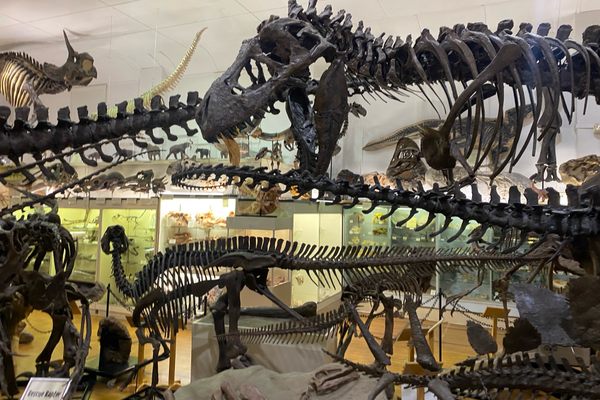About
In the Museum of London hangs the colossal minotaur-esque skull of a beast that's been extinct for nearly 400 years, the aurochs. This particular skull dates from the Neolithic period and was discovered in Ilford, East London, where herds of this creature once roamed.
The Eurasian aurochs (plural "aurochsen") was a gigantic species of wild cattle that was found across the forests and steppes of Europe and Central Asia until its extinction. It is the same magnificent beast that is a recurrent theme in the prehistoric cave paintings of Lascaux and Chauvet in France and Altamira, Spain, which indicates that it must have been an animal imbued with a cultural and spiritual significance for the Paleolithic hunter-gatherer peoples of Europe.
It is also believed that the aurochs may have been associated with the later Celtic horned god Cernunnos, a diety linked to fertility, the animals of the forest, and the underworld. Paleontologists believe that this animal was likely the wild ancestor of the cattle first domesticated in Neolithic-era Turkey or Iran. Its genes have been found to survive in some domestic cattle breeds such as the "Bó Chiarraí" or Kerry dairy cow from Ireland and the Chillingham white cows of northern England.
This bovine behemoth stood approximately 6 feet tall at the shoulders and typically weighed a whopping 3,310 pounds. Such a colossal size and weight dwarf any bovine species that still exists. Its long, curved horns could reach lengths over 30 inches and were likely used by these animals to defend themselves and their herds against predators such as wolves, bears, and humans, which would be gored or trampled to death. As such, the early hunter-gatherer peoples would have faced tremendous dangers while hunting this beast. Nevertheless, by the end of the Bronze Age the aurochs was almost completely extirpated due to overhunting, and it was entirely extinct in Britain by the time of the Romans' invasion of the British Isles.
In continental Europe the aurochs survived for much longer, although it was also heavily overhunted for use in the Roman coliseums as a fighting beast and for its meat and skin. By the medieval age, the species could only be found in isolated and sparsely populated regions of eastern Europe where it was sometimes hunted by the nobility. The last reports of these animals suggest that a small population somehow clung onto survival until the 15th century in the forests of Poland. The final record of the species mentions an individual female that died from natural causes in 1627, the last member of her species, and with her passing the aurochs was extinct.
Update as of December 2022: Closed for refurbishment until 2026.
Related Tags
Know Before You Go
The aurochs skull can be seen in the Prehistoric Gallery of the Museum of London and is the first object on display in this section. The remains of many other prehistoric animals that once were found in the forests of London can also be seen nearby. The Museum of London is located next to the Barbican and can be reached by taking the tube to the station of the same name. Entrance to the museum is free, although a donation of £5 is recommended as it helps to keep the institution running. The museum opens from 10 a.m. to 6 p.m. daily.
Community Contributors
Added By
Published
April 3, 2019





